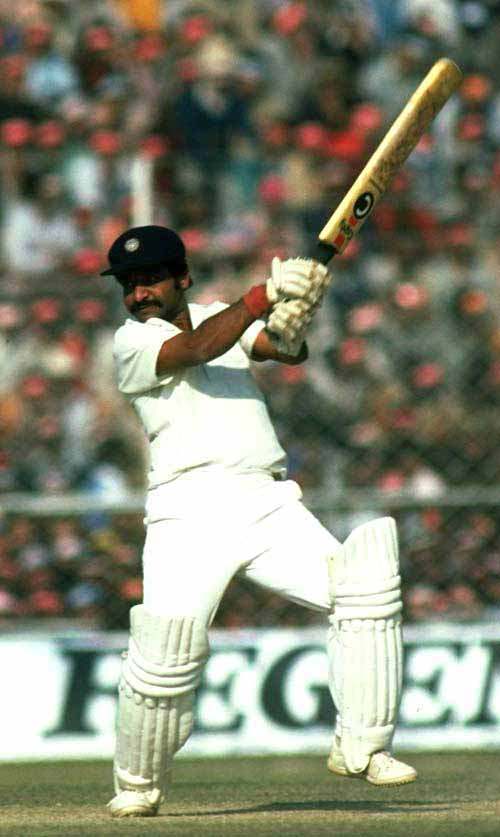Amidst all the hype and hoopla surrounding the IPL, the rebel Indian Cricket League has announced its new T20 tournament called "ICL 20s Grand Championship" which features new teams, venues and a new broadcaster as well. The new teams are one from Pakistan, Lahore Badshahs and the other Ahmedabad Rockets apart from the six teams that featured in the previous tournament. Hyderabad, Gurgaon and Panchkula will be the venues for the matches. Ten Sports, owned partly by the Zee group will telecast the matches live along with Zee Sports. The tournament is to be played from March 9 to April 7.
Here is the tournament schedule.
1st Match: Ahmedabad Rockets v Chandigarh Lions at Panchkula - Mar 9, 2008
2nd Match: Delhi Giants v Mumbai Champs at Hyderabad (Decc) - Mar 10, 2008
3rd Match: Chennai Superstars v Lahore Badshahs at Hyderabad (Decc) - Mar 11, 2008
4th Match:Hyderabad Heroes v Lahore Badshahs at Hyderabad (Decc) - Mar 12, 2008
5th Match: Kolkata Tigers v Mumbai Champs at Panchkula - Mar 13, 2008
6th Match: Chandigarh Lions v Delhi Giants at Panchkula - Mar 15, 2008
7th Match: Chennai Superstars v Hyderabad Heroes at Hyderabad (Decc) - Mar 15, 2008
8th Match: Ahmedabad Rockets v Delhi Giants at Panchkula - Mar 16, 2008
9th Match: Chandigarh Lions v Lahore Badshahs at Panchkula - Mar 16, 2008
10th Match: Chennai Superstars v Kolkata Tigers at Hyderabad (Decc) - Mar 17, 2008
11th Match: Ahmedabad Rockets v Mumbai Champs at Panchkula - Mar 18, 2008
12th Match: Hyderabad Heroes v Kolkata Tigers at Hyderabad (Decc) - Mar 19, 2008
13th Match: Chennai Superstars v Delhi Giants at Hyderabad (Decc) - Mar 20, 2008
14th Match: Ahmedabad Rockets v Hyderabad Heroes at Hyderabad (Decc) - Mar 21, 2008
15th Match: Lahore Badshahs v Mumbai Champs at Panchkula - Mar 21, 2008
16th Match: Ahmedabad Rockets v Kolkata Tigers at Hyderabad (Decc) - Mar 22, 2008
17th Match: Chandigarh Lions v Chennai Superstars at Panchkula - Mar 22, 2008
18th Match: Chennai Superstars v Mumbai Champs at Panchkula - Mar 23, 2008
19th Match: Delhi Giants v Lahore Badshahs at Gurgaon - Mar 23, 2008
20th Match: Delhi Giants v Hyderabad Heroes at Gurgaon - Mar 24, 2008
21st Match: Chandigarh Lions v Mumbai Champs at Panchkula - Mar 25, 2008
22nd Match: Kolkata Tigers v Lahore Badshahs at Gurgaon - Mar 26, 2008
23rd Match: Chandigarh Lions v Kolkata Tigers at Gurgaon - Mar 27, 2008
24th Match: Ahmedabad Rockets v Chennai Superstars at Hyderabad (Decc) - Mar 28, 2008
25th Match: Chandigarh Lions v Hyderabad Heroes at Hyderabad (Decc) - Mar 29, 2008
26th Match: Ahmedabad Rockets v Lahore Badshahs at Gurgaon - Mar 30, 2008
27th Match: Delhi Giants v Kolkata Tigers at Gurgaon - Mar 30, 2008
28th Match: Hyderabad Heroes v Mumbai Champs at Hyderabad (Decc) - Mar 31, 2008
Semi Final 1: at Lal Bahadur Shastri Stadium, Hyderabad, Deccan- Apr 2, 2008
Semi Final 2: at Tau Devi Lal Cricket Stadium, Panchkula, Chandigarh - Apr 3, 2008
1st Final: at Tau Devi Lal Cricket Stadium, Panchkula, Chandigarh - Apr 4, 2008
3rd Place Play-off: at Tau Devi Lal Cricket Stadium, Panchkula, Chandigarh - Apr 4, 2008
2nd Final: at Teri Oval, Gual Pahari, Gurgaon - Apr 6, 2008
3rd Final: at Teri Oval, Gual Pahari, Gurgaon - Apr 7, 2008






